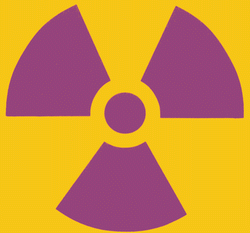August 26, 2005 feature
Bacteria that bind toxic metals: Are they the future of nuclear waste cleanup?

by Gina M. Buss
Researchers in Germany have found a way to use bacteria which are able to accumulate toxic metals and survive in nuclear waste as a way of cleaning up toxic dumps.
230,000 tons of nuclear waste: that’s how much toxic metal can accumulate after 30 years of mining uranium - and that’s just one waste pile. With all the nuclear waste production throughout the world, this toxic metal is literally “piling up” in more and more places, and is encroaching on inhabited areas.
During the process of generating nuclear power and nuclear weapons, radionuclides like uranium are discharged into the environment. These metals pose a serious ecological and health threat and usually contaminate the soil, sediment, and waters surrounding the waste piles.
Conventional methods of cleaning up these toxic wastes are often expensive and not very effective. The environment is in dire need of a novel approach to waste clean-up and researchers in Germany may have the answer.
A recent study from the Institutes of Radiochemistry and Nuclear Physics in Dresden outlines a way of using bioremediation as a means for eliminating nuclear waste. Bioremediation is a process that uses microorganisms to return an environment back to its original condition after it has been exposed to contaminants.
Nuclear waste piles, such as the one in southeast Germany that’s highlighted in the
study, are a reservoir for certain strains of bacteria. These bacteria have evolved special mechanisms to survive in this waste that would normally be toxic to other types of microorganisms.
The strain Bacillus sphaericus has evolved a crystalline surface layer (S-layer) that covers the outside of the cell. This layer is more than a protective barrier to the bacteria, it serves to accumulate high amounts of toxic metals such as uranium, lead, copper, aluminum, and cadmium.
Researchers are currently seeking out ways to exploit the bacteria’s strategies. New technology is incorporating the S-layer structure onto silicon wafers, metals, polymers, nanoclusters, and bioceramic discs. All of these products could be used to remove metals from contaminated water and soil.
Additionally, these technologies could be used to recover precious metals such as platinum and palladium from industrial waste sites and recycle them for making electronic products.
Bacteria may be the template for new technology aimed at nuclear waste removal. The time may be near when synthetic S-layer discs can be placed in contaminated areas and act as sponges, cleaning up a big toxic mess.
Reference:
Pollman K, Raff J, Merroun M, Fahmy K, and Selenska-Pobell S.
Biotechnology Advances. 2005. Article in press.
by Gina M. Buss, Copyright 2005 PhysOrg.com

















